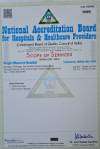
Winter and fall allergies can make you miserable. That’s why we’ll take a look at common allergy myths, effective allergy treatments, and tips to help you stay healthy during the winter (and year round).
What causes allergies?
Allergies are caused by an overreaction of the immune system to certain substances. An allergen is any substance that causes an allergic reaction. Many of these allergies are seasonal, caused by common allergens like pollen and pet dander. If untreated, allergies can lead to chronic conditions such as rhinosinusitis and asthma.
Fall allergy symptoms are enough to make anyone miserable. Don’t compound your problem by falling prey to common allergy myths. We’ve compiled some of the most common allergy misconceptions. Can you separate fact from fiction?
Winter Allergies: Why Year-Round Treatment Is Crucial?
When it comes to allergy season, spring and fall tend to steal the spotlight. However, winter allergies are also common, and they can put a damper on these cold months.
Allergens are still lurking around, even in the late winter months. Just because pollen isn’t in the air doesn’t mean that allergens—things that cause allergies—are gone. Winter may bring relief to those who are allergic to pollen, but indoor allergens are still present. This is one reason why it’s so important to have allergy treatment year round.
Can you tell the difference between an allergy and the common cold?
Colds are more common in winter, and since they share some of the same symptoms as allergies, it can be difficult to tell them apart. For example, they can both demonstrate:
- Cough
- Fatigue
- Stuffy, runny nose
- Sore throat
How to minimize your chances of getting winter allergies
There are few things more frustrating than looking forward to a wonderful family event only to have the good time hampered by allergies. Often, the best allergy treatment is to avoid exposure to things that will agitate them.
You should consider:
- Using a HEPA filter vacuum. These filters are 99.97 proficient in capturing particles 0.3 microns
- Keeping home humidity levels low—aim for 40 to 50 percent
- Washing bedding weekly
- Removing mold
- Keeping indoor pets out of the bedroom
- Placing dehumidifiers in damp areas, particularly basements



